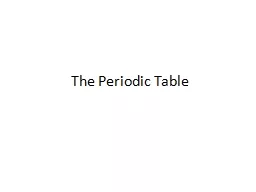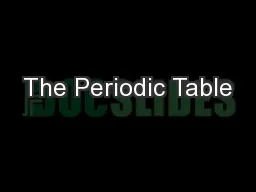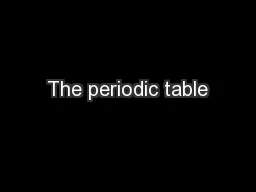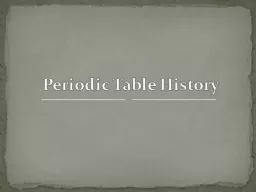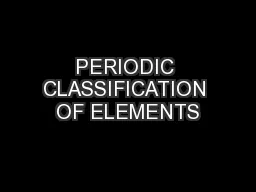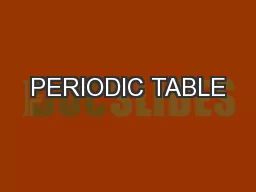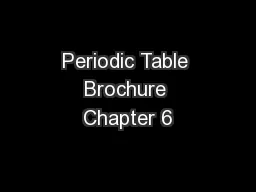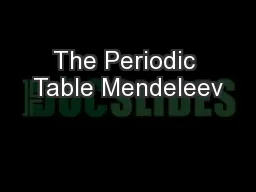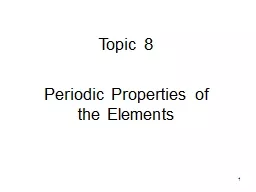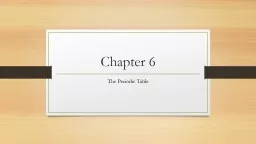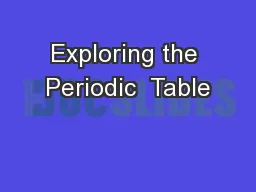PPT-The Periodic Table
Author : jane-oiler | Published Date : 2016-05-02
Vocabulary Malleable A term used to describe material that can be hammered or rolled into shape Ductile A term used to describe a material that can be pulled out
Presentation Embed Code
Download Presentation
Download Presentation The PPT/PDF document "The Periodic Table" is the property of its rightful owner. Permission is granted to download and print the materials on this website for personal, non-commercial use only, and to display it on your personal computer provided you do not modify the materials and that you retain all copyright notices contained in the materials. By downloading content from our website, you accept the terms of this agreement.
The Periodic Table: Transcript
Download Rules Of Document
"The Periodic Table"The content belongs to its owner. You may download and print it for personal use, without modification, and keep all copyright notices. By downloading, you agree to these terms.
Related Documents

